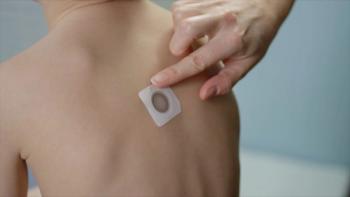Key takeaways:
- New data from the Phase 1/2 CHORD trial published in The New England Journal of Medicine and presented at AAO-HNSF 2025 showed that 11 of 12 children treated with Regeneron’s DB-OTO gene therapy experienced hearing improvements, with 3 achieving normal hearing levels.
- DB-OTO, which delivers a functional OTOF gene via dual AAV vector, restored natural acoustic hearing in most participants and produced stable or improving gains up to 48 weeks, without therapy-related serious adverse events.
- Describing the early results as “a home run,” investigator Jay T. Rubinstein, MD, PhD, said the therapy offers “a remarkable degree of hearing restoration,” as Regeneron plans to seek FDA approval later this year.
Updated data published in the New England Journal of Medicine and presented at the 2025 American Academy of Otolaryngology–Head and Neck Surgery meeting showed that 11 of 12 children treated with Regeneron’s investigational DB-OTO gene therapy experienced clinically meaningful hearing improvements, with 3 having achieved normal hearing levels (HLs).1,2
The findings come from the pivotal phase 1/2 CHORD trial (NCT05788536), which is evaluating DB-OTO for profound genetic hearing loss caused by variants in the OTOF gene. The therapy uses a dual adeno-associated virus vector to deliver a functional copy of the OTOF gene to inner ear hair cells, aiming to restore natural acoustic hearing.2
Hearing and speech improvements
Among 12 treated participants aged 10 months to 16 years, 9 received DB-OTO in one ear and 3 in both ears.1 Nearly all participants (11 of 12; 14 of 15 treated ears) demonstrated improved hearing within weeks of treatment. By week 24, 9 children achieved hearing thresholds of ≤ 70-dB HL on behavioral pure-tone audiometry, meeting the primary efficacy end point.2 This level of hearing typically does not require cochlear implantation and enables natural acoustic hearing.
- Six participants could hear soft speech without assistive devices, and 3 achieved normal hearing sensitivity.
- One child who did not initially meet the primary end point showed continued improvement and reached near-normal HLs at week 48.
- In addition, 9 participants demonstrated an auditory brainstem response at ≤ 90-dB normalized HL, achieving the trial’s key secondary end point.
Among 8 participants followed for 36 weeks or longer, hearing gains remained stable or continued to improve. In 3 children who underwent speech assessments at week 48, all showed significant gains, including improved word recognition and the ability to detect distant or low-volume sounds.1
Safety findings and next steps
DB-OTO and its surgical administration were well tolerated. No therapy-related serious adverse events were reported. Two participants experienced serious events unrelated to DB-OTO, with one linked to a cochlear implant surgical complication and another to a recent vaccination. Transient vestibular symptoms such as dizziness or nausea were reported in some participants and resolved fully.1,2
The therapy has received orphan drug, rare pediatric disease, fast track, and regenerative medicine advanced therapy designations.1
Context and previous data on DB-OTO gene therapy







